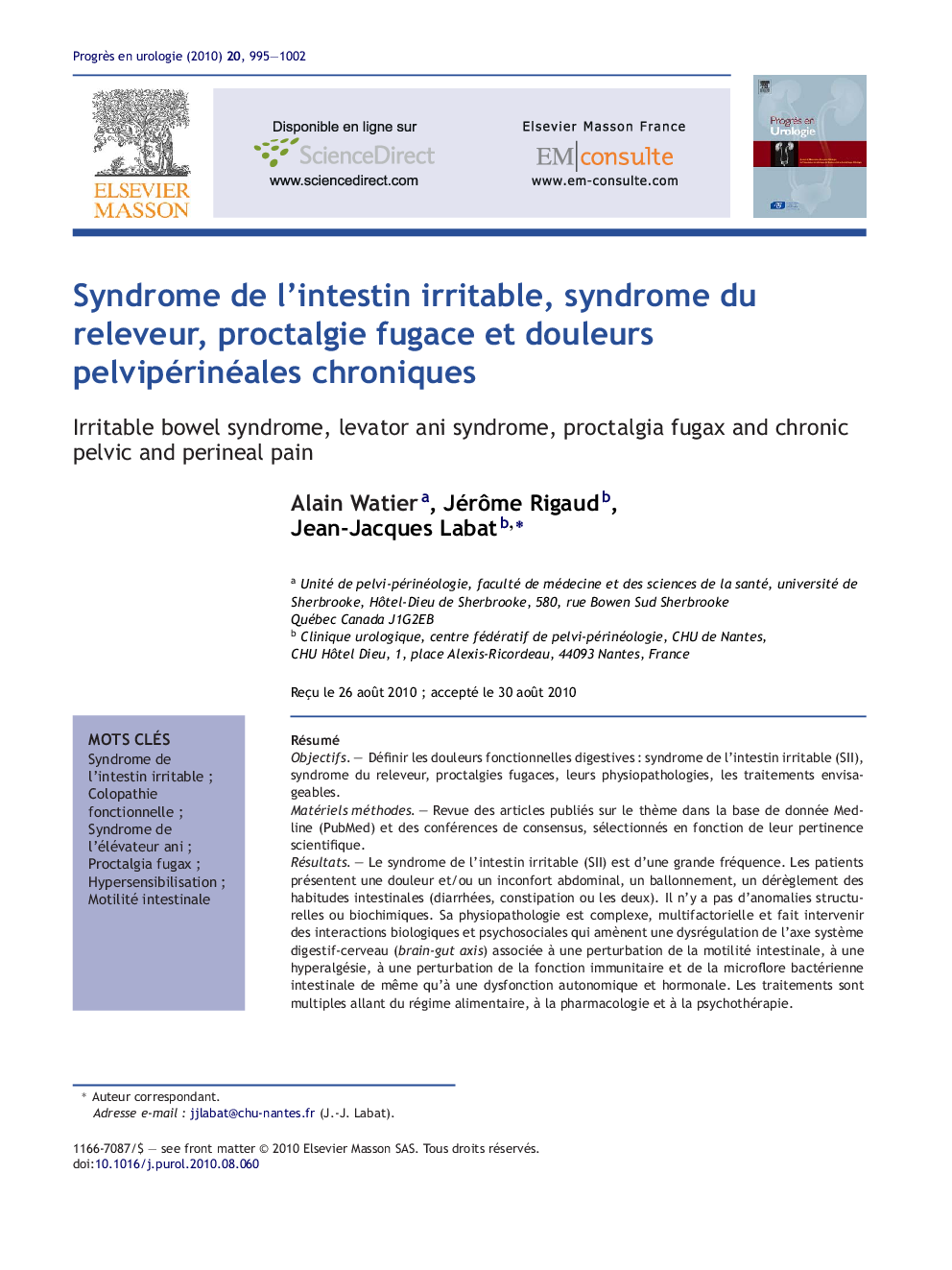| Article ID | Journal | Published Year | Pages | File Type |
|---|---|---|---|---|
| 3823763 | Progrès en Urologie | 2010 | 8 Pages |
RésuméObjectifsDéfinir les douleurs fonctionnelles digestives: syndrome de l’intestin irritable (SII), syndrome du releveur, proctalgies fugaces, leurs physiopathologies, les traitements envisageables.Matériels méthodesRevue des articles publiés sur le thème dans la base de donnée Medline (PubMed) et des conférences de consensus, sélectionnés en fonction de leur pertinence scientifique.RésultatsLe syndrome de l’intestin irritable (SII) est d’une grande fréquence. Les patients présentent une douleur et/ou un inconfort abdominal, un ballonnement, un dérèglement des habitudes intestinales (diarrhées, constipation ou les deux). Il n’y a pas d’anomalies structurelles ou biochimiques. Sa physiopathologie est complexe, multifactorielle et fait intervenir des interactions biologiques et psychosociales qui amènent une dysrégulation de l’axe système digestif-cerveau (brain-gut axis) associée à une perturbation de la motilité intestinale, à une hyperalgésie, à une perturbation de la fonction immunitaire et de la microflore bactérienne intestinale de même qu’à une dysfonction autonomique et hormonale. Les traitements sont multiples allant du régime alimentaire, à la pharmacologie et à la psychothérapie.DiscussionLe SII accompagne très souvent la sémiologie de patients souffrant de diverses pathologies douloureuses pelvi-périnéales, vues en urologie notamment. Ce syndrome s’intègre aussi dans une vision uniciste et intégrée des dysfonctions pelvi-périnéales, et évite de dichotomiser le segment postérieur du périnée des segments médian et antérieur.
SummaryObjectivesTo define functional gastrointestinal pain, irritable bowel syndrome (IBS), levator ani syndrome, proctalgia fugax, the pathophysiology of these syndromes and the treatments that can be proposed.Material and methodsReview of articles published on the theme based on a Medline (PubMed) search and consensus conferences selected according to their scientific relevance.ResultsIBS is very common. Patients report abdominal pain and/or discomfort, bloating, and abnormal bowel habit (diarrhoea, constipation or both), in the absence of any structural or biochemical abnormalities. IBS has a complex, multifactorial pathophysiology, involving biological and psychosocial interactions resulting in dysregulation of the brain–gut axis associated with disorders of intestinal motility, hyperalgesia, immune disorders and disorders of the intestinal bacterial microflora and autonomic and hormonal dysfunction. Many treatments have been proposed, ranging from diet to pharmacology and psychotherapy.DiscussionPatients with various types of chronic pelvic and perineal pain, especially those seen in urology departments, very often report associated IBS. This syndrome is also part of a global and integrated concept of pelviperineal dysfunction, avoiding a rigorous distinction between the posterior segment and the midline and anterior segments of the perineum.
